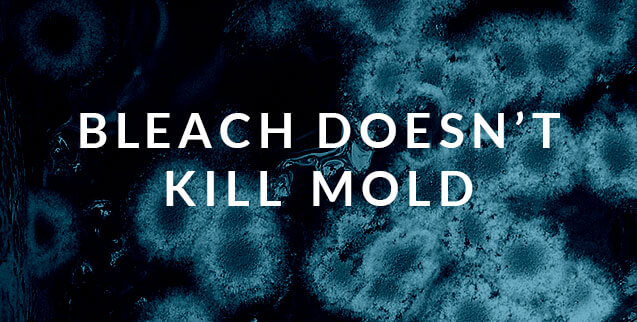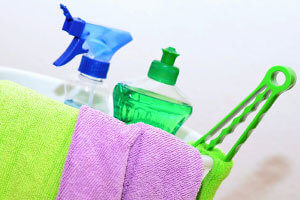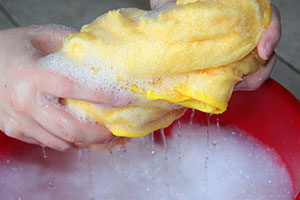
The Reasons Why Bleach Doesn’t Kill Mold
That sudden leak in your roof caused you more problems than you originally thought. On top of fixing the hole in the roof and replacing the insulation that was damaged in the attic space, you also notice that you’ll need to address a new mold problem cropping up around the leak area. Mold is growing on the ceiling, the walls, and there’s even a little discoloration on the floor. You’re a little putout, but you think it’s nothing that bleach can’t fix, so you go to grab it from the cupboard.
This scenario happens a lot more than you might think. Homeowners often believe they can kill mold with a little bleach, but that isn’t actually the case. The truth is, bleach doesn’t kill mold. Once you use a solution that will kill it, you’ll also need to remove mold from your house to avoid all the ill effects it has on your health.
 Bleach Can’t Reach Mold
Bleach Can’t Reach Mold
Bleach is effective for many things, including killing viruses and bacteria and lifting stains out of clothing or other textile goods, but it’s not effective for killing mold. Throwing bleach on a moldy surface will not provide any benefits. Because bleach is not a dirt-removing agent, it doesn’t have the ability to cut or pass through dirt or grime. The bleach you put on the moldy and dirty area doesn’t even reach the mold because of the covering substance.
If bleach does happen to reach the mold, its killing potency will have been deactivated due to the contact with organic material. People think that bleach kills mold because it removes the color from the substance, which leaves the surface looking “clean.”
Bleach Is Not For Porous Surfaces
Even if you take the time to scrub the dirt off of a moldy surface before pouring bleach on it, you will still run into the problem of bleach’s limited access. Bleach does not soak into porous material such as drywall, wood, or plaster. Clorox’s own application to The United States Environmental Protection Agency and the Centers for Disease Control and Prevention both specify that Clorox bleach is only recommended for use on hard surfaces.
 You Have to Remove Mold Not Just Kill Mold
You Have to Remove Mold Not Just Kill Mold
If you happen to first scrub off the dirt and you only use bleach on hard surfaces, you still won’t be effectively killing mold. In fact, you will be feeding it. Bleach has an extremely short potency life and deactivates when it comes into contact with organic material, which includes mold. Mold also grows deep into surfaces so if the bleach kills anything it will only be the top layer due to the fact that it deactivates quickly. After mold deactivates, the main ingredient in bleach, which is water, stays behind and feeds the remaining mold allowing it to grow even more.
On top of the fact that bleach is not effective in killing mold, it remains that even if it were effective, it still wouldn’t protect you from mold’s negative health effects. According to the EPA, “Dead mold may still cause allergic reactions in some people, so it is not enough to simply kill the mold, it must also be removed.” The EPA also states that using bleach is not a recommended practice in mold cleanup.
When you are facing a mold problem there are many factors to consider but effectively killing and removing all of it should be a top priority. Many solutions exist that are specifically formulated for mold, but without proper usage they can be just as ineffective as bleach. When dealing with a large mold contamination, you should consider hiring a professional mold remediation company for your safety and peace of mind. They will safely, professionally, and completely remove the mold from your home or business.



